
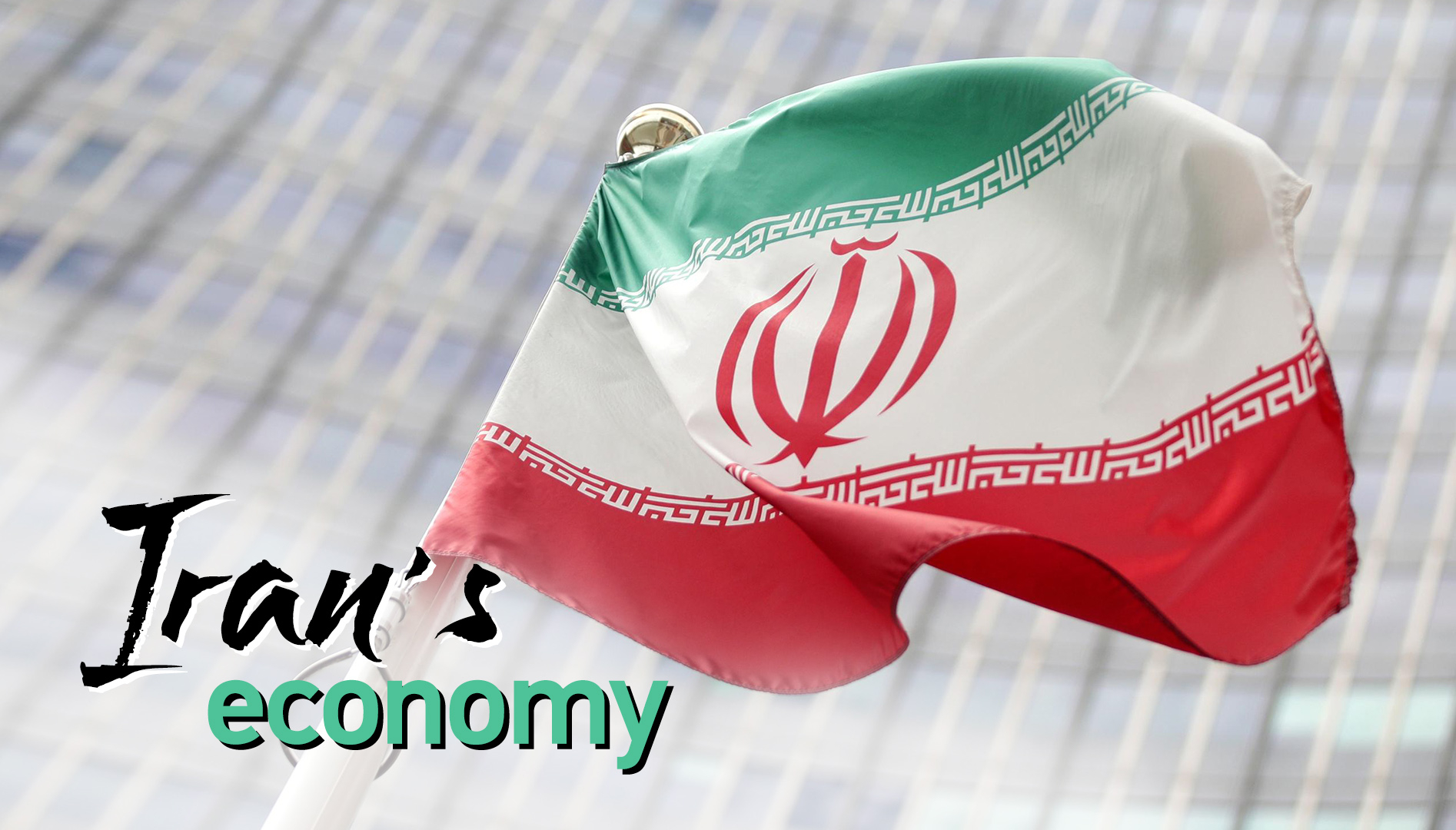
Iran announced Saturday details of the latest scale-back to its nuclear commitments under a 2015 deal, saying it has started up advanced centrifuges to boost the country's stockpile of enriched uranium.
Under the accord, Iran agreed to limit its sensitive nuclear activities in return for the lifting of sanctions to revive its economy, such as a greater ability to sell its oil – banned through U.S. sanctions.
Last year, the U.S. unilaterally withdrew from the deal and reinstated sanctions, taking a heavy toll on Iran's economy.
But a year after the big shock to the economy, Iran says it is now in a stable position.
Market stabilized
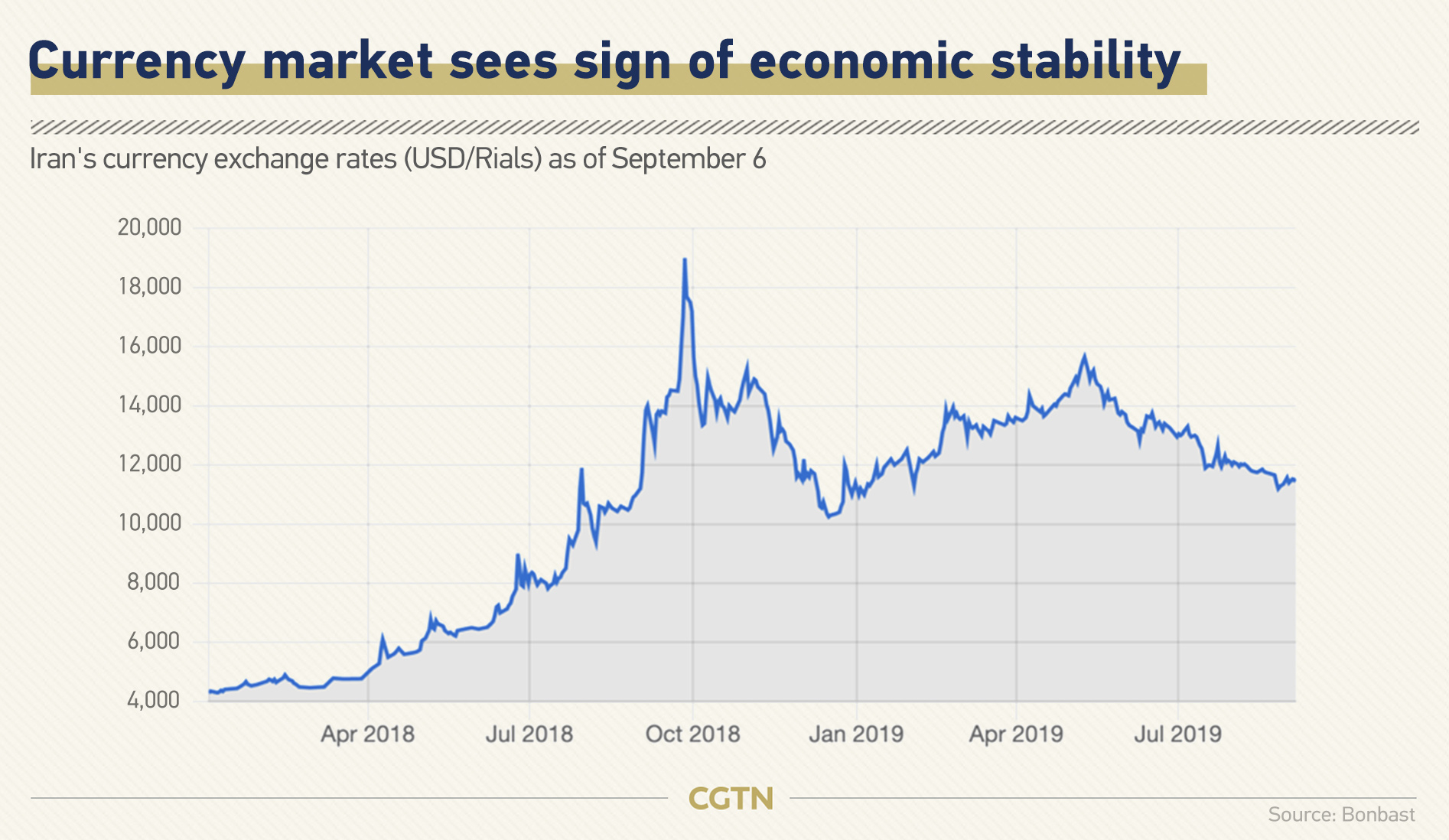
The value of the Iranian currency rial has been strengthened in recent months. The rebound has helped slow inflation, according to experts.
"Month-long pressures by sanction-devising countries on Iran were broken, and there is relative stability in Iran’s economic sector," the Iranian Mehr News Agency quoted the Governor of the Central Bank of Iran Abdolnasser Hemmati as saying on Thursday.
The governor also said earlier that the rial's recovery started at the same time full U.S. sanctions kicked in, adding "we are in control of the rates of exchange" and "the economy is moving toward stability," according to Radio Farda.
Last year saw the rial under severe pressure: its rate of exchange for every U.S. dollar peaked at around 180,000 rials in September, losing its value by almost threefold.
Oil sales remain strong
Starting July, Iranian jumbo tanker Adrian Darya 1, laden with 2.1 million barrels of crude, became the most-watched ship in the world after the British navy seized it off the coast of Gibraltar on suspicion of carrying oil to Syria.
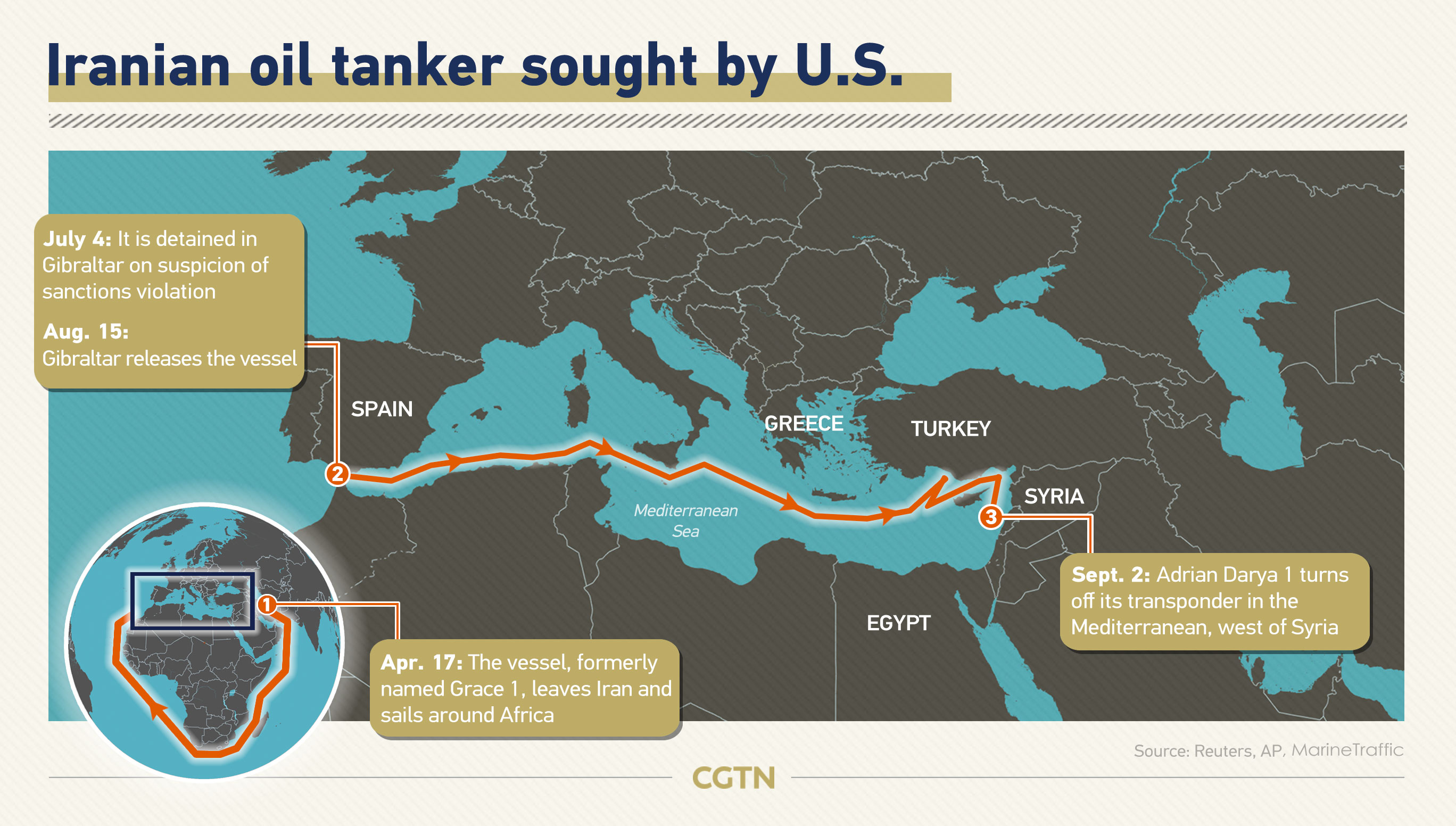
Iran said the oil aboard, worth about 130 million U.S. dollars, has been sold to an unnamed buyer as the ship continued its voyage in the Mediterranean Sea. However, anyone buying it likely would be targeted by U.S. financial sanctions.
Both the country's oil output and its GDP fell noticeably since the Trump administration slapped tough sanctions on Iran, especially on its lifeblood oil exports.
Read more:
Sanctions and pressures: U.S. ditching Iran nuclear deal one year on
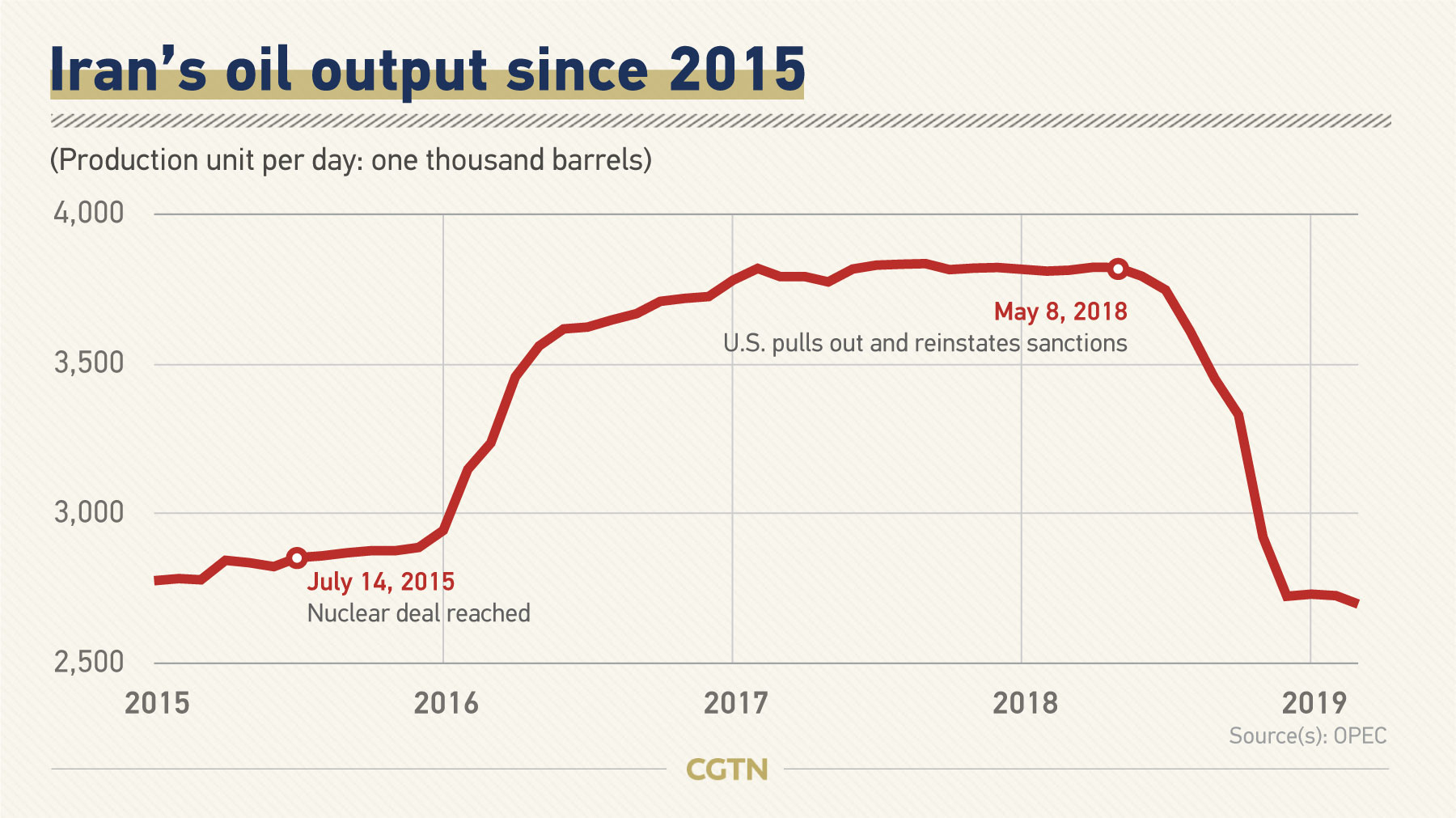
Iran ranks fourth in the world in proven crude oil reserves, and is one of the world's largest oil producers – which means its economic activity and government revenues depend largely on oil.
According to estimates from the International Monetary Fund (IMF), the nation's GDP was down by 3.9 percent in 2018 amid sanctions.
The IMF further predicted the Iranian economy to shrink by at least 6 percent in 2019 as the Trump administration vowed to "bring Iran's oil exports to zero."
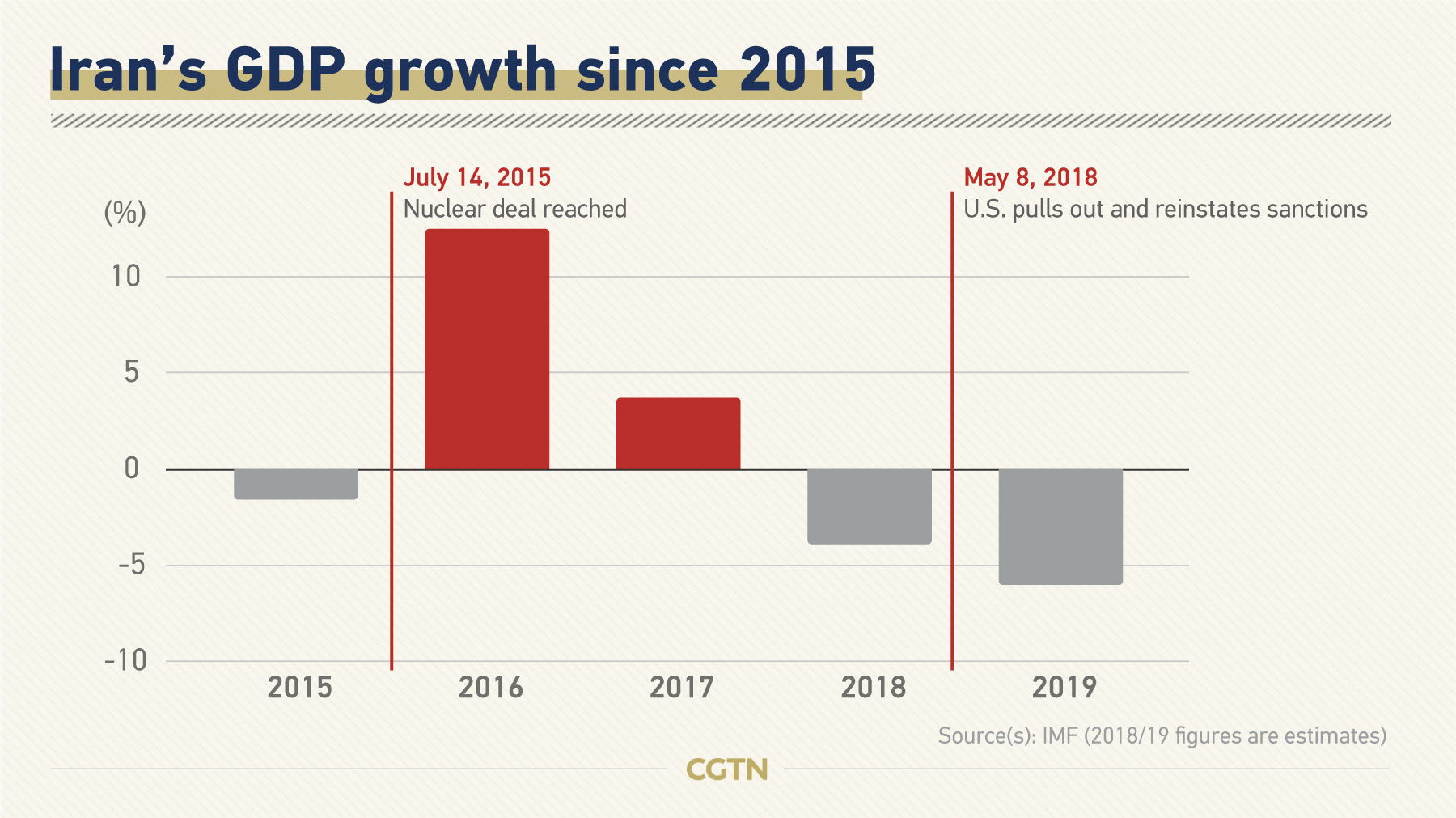
However, while U.S. sanctions have slashed the OPEC member's crude exports by more than 80 percent, Iran's oil product sales remain strong at nearly 500 million U.S. dollars a month, according to Reuters.
Sanctions have barely affected Iran's exports of oil products, primarily fuel oil used for power generation and shipping as well as liquefied petroleum gas (LPG) used as cooking gas and petrochemical feed, Reuters said.
Its data shows Iran exported more than 230,000 bpd of fuel oil in August, slightly above July's figure of 220,000 bpd.
Nuclear leverage
Iran has recently taken tough measures in response to the U.S. withdrawal from the 2015 nuclear deal.
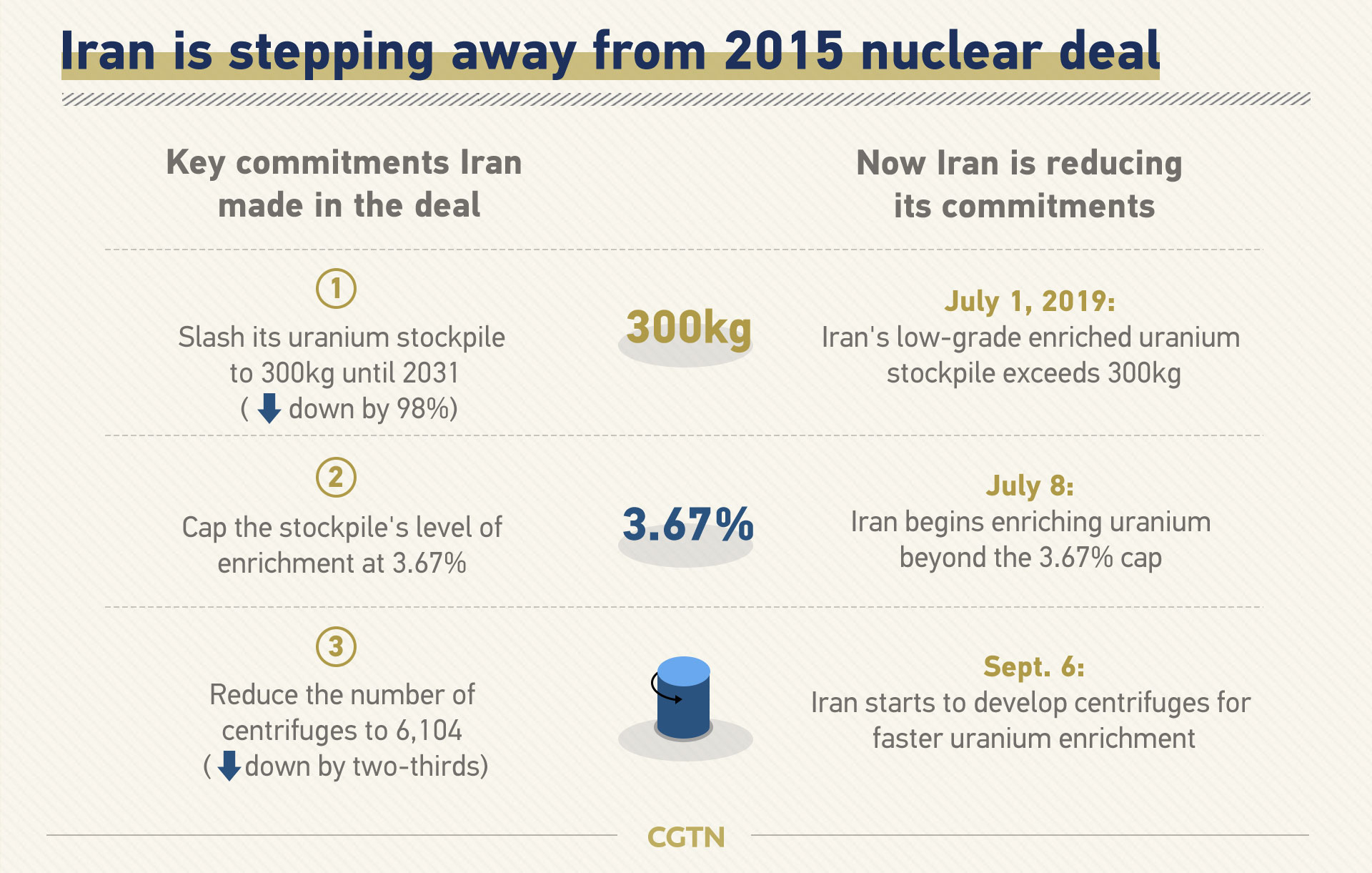
Read more:
Explainer: What is the Iran nuclear deal?
It has scaled back its nuclear commitments since May and has threatened to continue removing restraints on its nuclear program unless European parties to the pact did more to shield Iran's economy from the U.S. penalties.
Iran was believed to begin work on advanced centrifuges that will enrich uranium faster, which can produce fuel for power plants or for atomic bombs.
It has already breached the 300-kilogram limit on its stockpile of low-enriched uranium and exceeded the 3.67-percent cap on the purity of its uranium stocks in July.
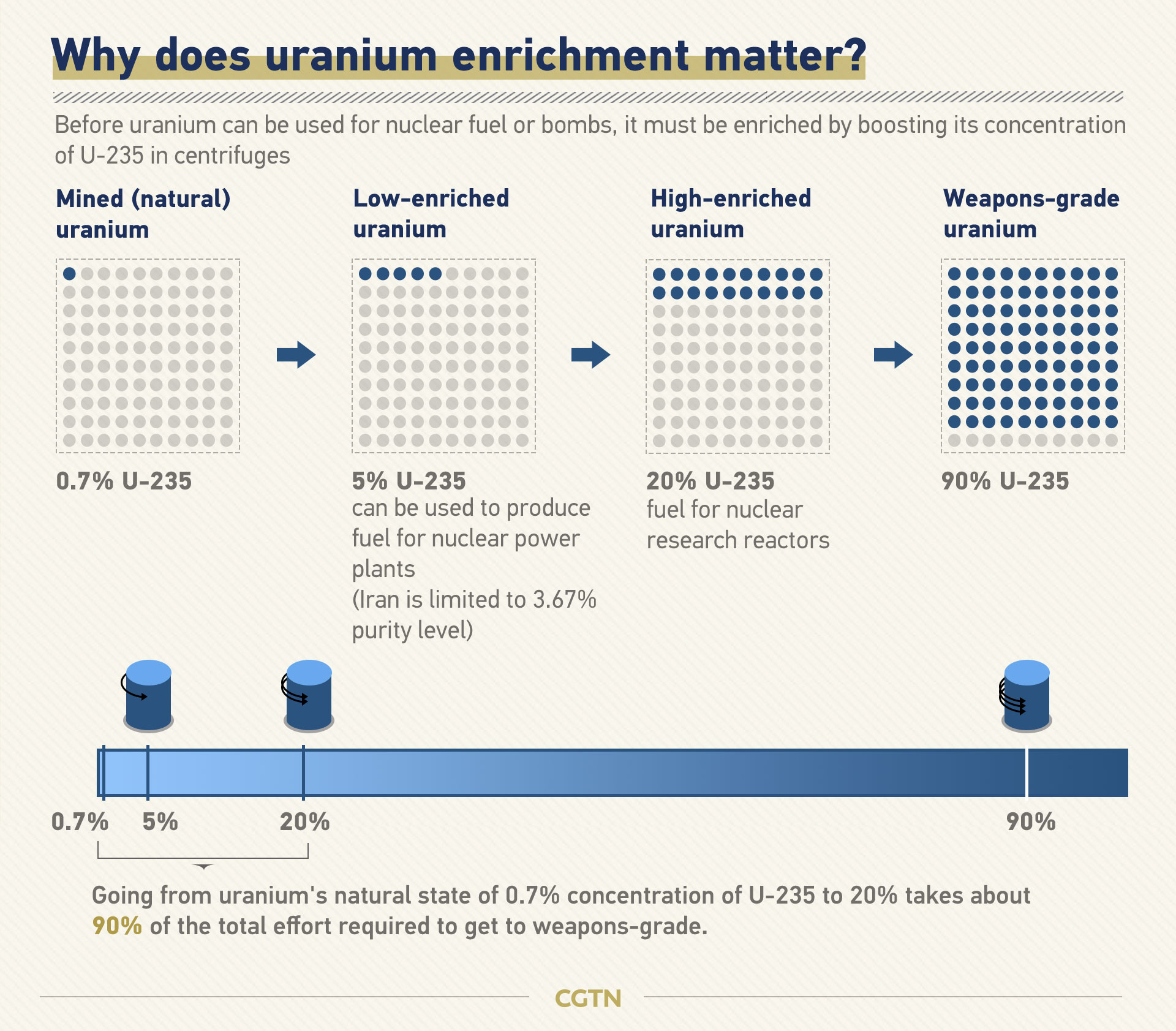
That appears to show Iran trying to resort to its own "maximum pressure" campaign through the nuclear program to get economic relief, according to analysis.
But Iran still keeps the door open for diplomacy. It long has insisted its nuclear program is peaceful.
President Hassan Rouhani on Wednesday gave European powers two more months to try to save the multilateral pact, adding that Iran's new measures will be "peaceful, under surveillance of the U.N. nuclear watchdog and reversible" if European powers keep their promises to save Iran's interests under the nuclear deal.
In a possible olive branch to the West, Iran has released seven crew members of the British-flagged oil tanker detained in the Strait of Hormuz seized earlier this summer.
Russia and India also said on Wednesday they planned to continue legitimate economic and trade cooperation with Iran, according to a joint statement issued after talks between the two country's leaders at an economic forum in Russia's Far East.
France in recent days had pushed the idea of offering Iran a credit of 15 billion U.S. dollars to sell its oil, a deal hanging by threads on Friday – but not yet broken.
(With input from Reuters, AP)
Graphics: Yu Peng, Yin Yating

Copyright © 2018 CGTN. Beijing ICP prepared NO.16065310-3
Copyright © 2018 CGTN. Beijing ICP prepared NO.16065310-3